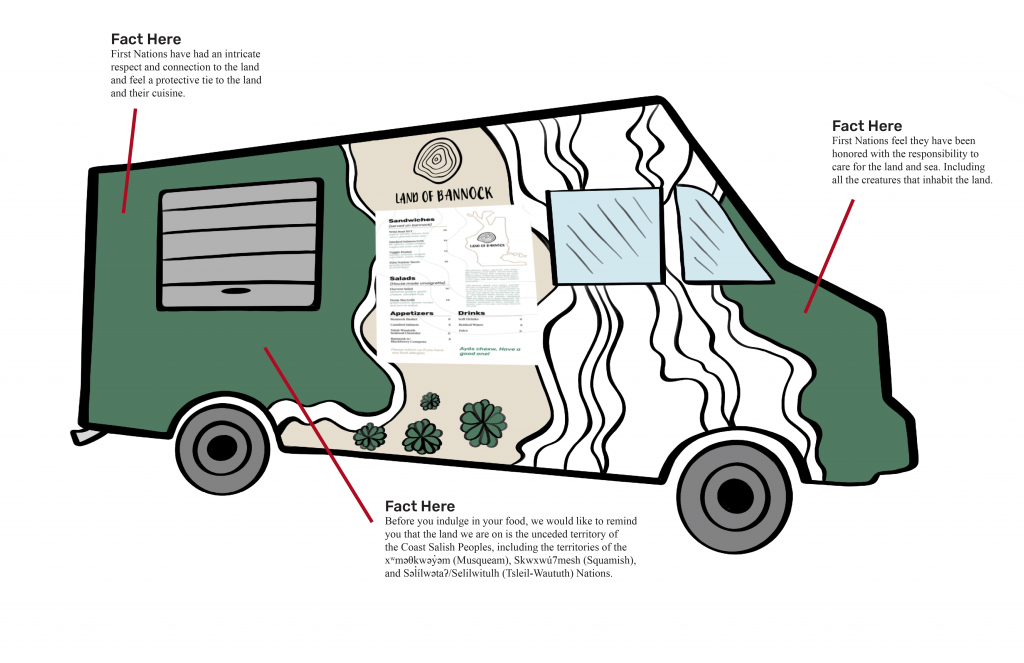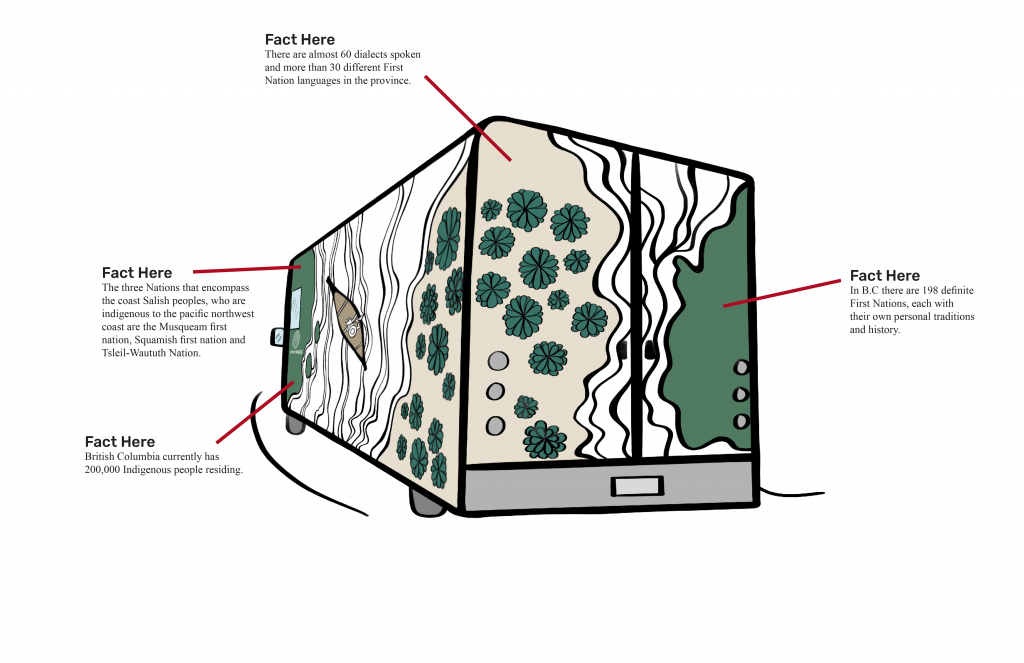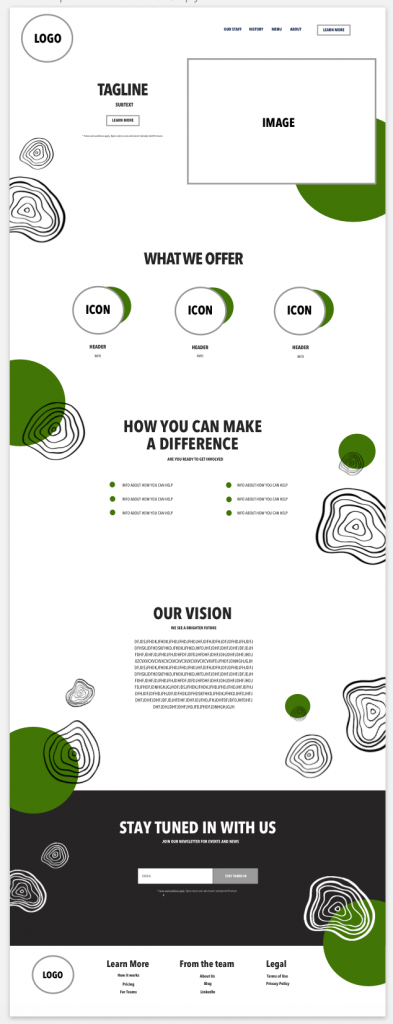The area of focus we chose for our Decolonizing Idea Campaign was a food truck that would move to various locations in Vancouver. Hosted by the City of Vancouver’s Creative City Strategy Group. Their mission goal is to increase the Musqueam, Squamish and Tsleil-Waututh’s visibility of the land. Our target audience is catered towards non-aboriginal residing in Vancouver or visiting. The Land Of Bannock traveling food truck will be released on June 21 which is National Aboriginal Day. The length of time that the food truck travels in Vancouver is determined by the success of the solution. We would also have to make sure we consult with First Nations before the release of the food truck.
Our group consisted of four people. In the beginning, we had many directions that we could go with the project—we worked on narrowing down to a topic that would help give us flexible options, and be executed on time with a consistent design strategy.
Our process began with:
- First doing research from the course website splitting up research material regarding the past, present land, and land rituals.
- With the information gathered we decided we wanted to communicate about the First Nations spiritual connection with the land, traditions, and cuisine. Their connection with the land roots deep in their history because the land is so important to them both in reconciliation and in connection.
For the ideation process, we started by:
- Brainstorming 100 different ideas individually—soon coming together as a collective we came up with 5 campaigns ideas.
- When receiving feedback from our teacher The Pop-up Food Truck was the best choice for the following reasons: it was executable and was the most effective solution to answer our goal to increase visibility.
- With additional refinements added to our Pop Up Food Truck idea such as adjusting our logo name from Breaking Bannock to Land of Bannock, we were heading on the right track. After having spoken to the MOPA students who gave us critical beneficial feedback and guidance.
The MOPA students recommended the following adjustments:
- We were advised to emphasize the First Nations culture that surrounds their cuisine. Instead of the spiritual connection that is often a stigma about all First Nations Peoples.
- Tell stories about local leaders, locations, and about food.
- Adjust Menu to have all the translations beside the locations and food items.
The various collateral I worked on in my team was the food truck design, Microsite template with circle line icons as well as in the logo. In addition, doing research earlier in the process which was divided up.
I believe I deserve an 8/10 because I contributed many ideas throughout the beginning of the project to the end. I executed the food truck to the best of my abilities and created the template for the microsite. As well I created a visual personality for the brand I feel with the design style. However, I believe I could have gathered more research or spoken to First Nations people around Capilano University for more insight regarding their thoughts and past experiences.





